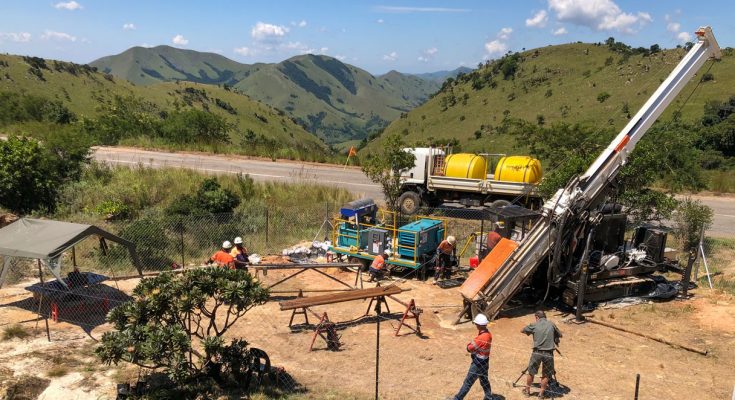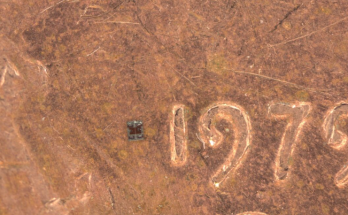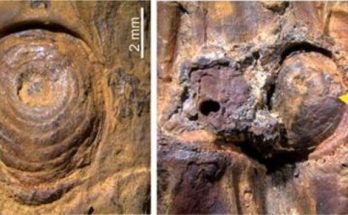CMEDIA: Beneath the Barberton Makhonjwa Mountains, home to South Africa’s original gold rush, lies something more scientifically valuable than any precious metal: Earth’s first land ecosystem, trapped in a 3.2-billion-year-old rock formation called the Moodies Group, https://www.science.org reports said.
In roadcuts and mineshafts, scientists had already glimpsed fossilized remnants of the slimy microbial mats thought to have covered the ancient rivers, beaches, and estuaries. Now, they are drilling into the terrain for the first time, retrieving fresh samples of what may have been Earth’s first microbial producers of oxygen.
“It’s really lucky there are places as old as this,” says Tanja Bosak, a geobiologist at the Massachusetts Institute of Technology who is unaffiliated with the project. Although older signs of life have been found in South Africa and Australia—and potentially Greenland—in what were once ocean deposits, no other spots record primordial life on land so convincingly, she says. “This covers a not-well-understood time in Earth’s history.”
When the Moodies Group formed, Earth would have been nearly unrecognizable. Its atmosphere, rich in methane and carbon dioxide but nearly devoid of oxygen, kept the planet warm while the Sun was young and faint. The land was scarce because plate tectonics, the process that assembles continents, was just getting going. Here and there, however, volcanic archipelagos like the Moodies Group pierced the waters. Beaches ringing the volcanoes would have been ideal spaces for life to evolve and spread, says Christoph Heubeck, a sedimentary geologist at the Friedrich Schiller University of Jena. He leads the $2 million Barberton Archaean Surface Environments (BASE) project, which plans to complete drilling its eighth and final core next month.
The cores the team has already extracted, from deposits 200 meters below the surface, are rich in fossilized slimes. “We’ve drilled through hundreds of meters of them,” Heubeck says. Their nature, however, is a mystery.
Other ancient microbial fossils in the Moodies Group, found in what were marine and subsurface deposits, probably fed on sulfates or used a primitive form of photosynthesis to feed on iron. But those metabolic pathways would not have worked well in the Sun-soaked shallow waters in which the slimes lived. Heubeck believes these microbes were early ancestors of cyanobacteria, which some 800 million years later flooded the atmosphere with oxygen in what’s called the Great Oxidation Event. “The production of oxygen appears to be a process invented early in Earth’s history,” he says.
It’s a controversial claim. If oxygen-producing photosynthesis had evolved so early, some researchers argue, the Great Oxidation Event would have promptly followed. But the evidence for early “oxygen oases” has grown. Geochemists have found mineral deposits from well before the Great Oxidation Event that needed oxygen to form. And genetic analysis of cyanobacteria suggests they evolved, on land, around the same time as the Moodies Group, says Patricia Sanchez-Baracaldo, a paleobiologist at the University of Bristol who is unaffiliated with BASE. “The genomic record is independent and consistent with the idea that those were early ancestors of cyanobacteria.”
Heubeck and colleagues hope the fresh, unaltered microbial mats in the cores will yield decisive evidence: geochemical traces of oxygen production that have been missing in previous, exposed samples. That hunt will begin in earnest later this year, when the team begins to pore over half of the cores at a “sampling party” in Germany; the other half will remain in South Africa as an archive.
The cores could contain other scientific treasures. In 2010, Emmanuelle Javaux, an astrobiologist at the University of Liège, reported finding walled spherical microbial fossils up to 300 micrometers in diameter, hundreds of times the size of a typical bacterium, in mudstones extracted from a gold mine in the Moodies Group. Some thought the jumbo microbes were the world’s oldest eukaryotes—organisms with complex cells like our own—by 1 billion years, but confirmation proved elusive. Javaux hopes the BASE cores will capture the same fossils in better condition. “Now we just have to find them,” she says.
The BASE cores could also hold clues to the climate of that ancient landscape. One core contains what appears to be lithified layers of soil, which could capture indicators of the atmosphere’s composition. Offshore shales may record how the islands’ volcanic basalt eroded. Whether it broke off in chunks, as happens in today’s Arctic, or was ground down into bits as in tropical climates could hint at the ancient temperatures. Other samples capture an interwoven pattern of sand and mud layers, assembled by the ancient tides. The Moon was much closer to Earth at the time, and the tidal record could pin down its distance.
The cores should also contain a record of lightning strikes, which create strong magnetic fields that can be imprinted on rocks. Lightning might have supplied a key nutrient to the ancient ecosystem by splitting apart the tough molecular bonds of atmospheric nitrogen, enabling the atoms to form the compounds that life depends on. Because the microbes that break down nitrogen today were scarce or even nonexistent, the strike rate alone would reveal how much of this important nutrient was being added to the surface. “This nitrogen flux is potentially a major component of the biosphere at the time,” says Roger Fu, a planetary scientist at Harvard University.
In many ways, the Moodies Group cores are preparing geologists for the work to come when rock samples are returned from another 3-billion-year-old terrain—on the surface of Mars. Later this month, NASA’s Perseverance rover will reach a fossilized river delta and begin to drill cores. If, as hoped, future Mars missions return those cores to Earth, the lab techniques used on the BASE cores will come in handy, Bosak says. “Looking at these well-preserved sediments on Earth will tell us what the ideal case will be from Mars.”





